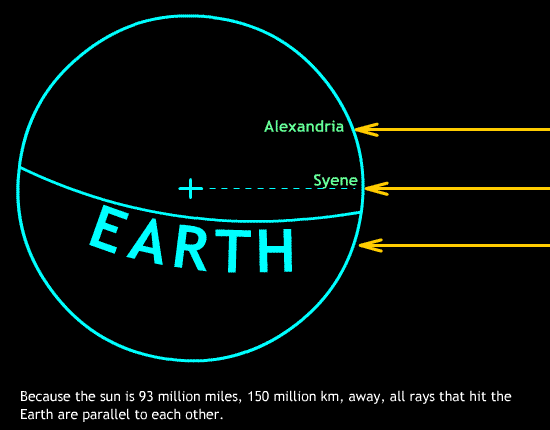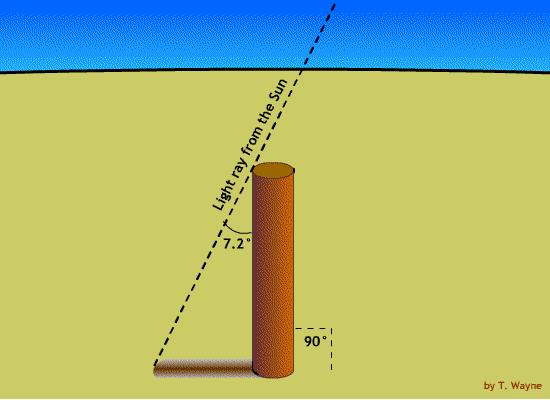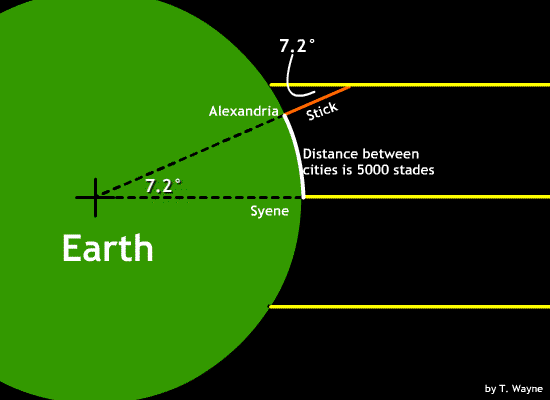In 200 B.C. Eratosthenes, a greek mathematician and astronomer, estimated the radius of the Earth with some geometry. Eratosthenes noticed something unique and interesting in a well in Syene, which is now Aswan, Eqypt. He noticed that on June 21st when he looked down the well he saw an image of the Sun. He realized this meant the Sun was directly over head and the line connecting the sun and the well pointed to the center of the Earth. (See animation below.)
This never happened in his home town of Alexandria. Alexandria was about 473 miles to the North. (Actually Eratosthenes measured this distance to be about 5000 stades but the exact length of a stade in not known. It is estimated to be between 500 and 520 feet.) Eratosthenes also recognized that the Sun's ray where parallel when they hit the Earth.

On a 21st of June, when the sun is directly over Syene, Eratosthenes planted a slick vertically in the ground in Alexandria. He measured the angle between the top of the stick and the shadow.

The stick in Alexandria points to the center of the Earth. Eratosthenes saw the big picture and could figure out the circumference of the Earth by simular triangles.

By ratios, Eratosthenes figured out the circumference of the Earth.

He calculated the circumference of the Earth is about 23,000 miles. The actual radius is closer to 25,000 miles. Then he calculated the radius of the Earth. Using

|